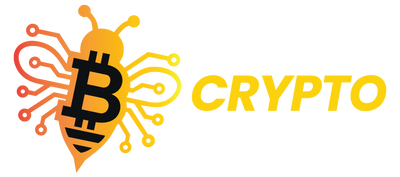Lost in Crypto Acronyms?
Every day, thousands of newcomers fire up a shiny new wallet, join a chat group, or overhear a mate talking crypto at the pub – and suddenly it’s like alphabet soup. The industry loves its acronyms. AA, MPC, RPC, DEX, NFT... letters everywhere. Most of us just nod politely the first time, then sneak off later to Google what on earth everyone’s on about.
The good news? You don’t need to memorise them all – you just need to know where to check. That’s where our Crypto Glossary comes in.
Take HODL, one of crypto’s most famous “accidents.” Back in 2013, a Bitcoin holder, a little worse for wear, typed “I AM HODLING” in an online forum. He meant “holding,” as in not selling during a price crash. The typo went viral, became a meme, and today it’s a philosophy: hold through the ups and downs.
Or consider BIP-39, the technical standard behind the 12 or 24 words your wallet gives you. Those words are your backup – lose them and your coins are gone. It sounds complicated, but the Glossary breaks it down in plain English.
Exchanges bring their own lingo. A CEX (centralised exchange) like Binance or Coinbase is run by a company. You can reset passwords and call support if needed. A DEX (decentralised exchange) is all code and no customer service – you keep control of your funds, but you’re also responsible if you make a mistake.
You’ll also hear about DeFi (decentralised finance). It covers things like lending, borrowing, and earning rewards directly through your wallet instead of a bank. Powerful, yes, but not without risks – smart contract bugs and scams are part of the territory.
And then there are NFTs. To some, they’re digital art collections; to others, just pictures on a screen. Technically, they’re unique tokens proving ownership of a digital item, and wallets like MetaMask or Phantom now display them natively.
Even the plumbing has jargon. Wallets connect to blockchains using RPCs, which are like the service providers for blockchain data. By default, many wallets use services like Infura, but you can switch to your own for more privacy.
Finally, a newer approach is MPC (multi-party computation). Instead of one seed phrase being the single key to your funds, MPC splits it into pieces stored across devices. No single part is enough, which helps reduce the risk of total loss.
Here’s the important bit: nobody knows all of this by heart, and you don’t need to either. What matters is having a resource you can turn to when the acronyms start piling up. That’s why we built our Crypto Glossary.
So the next time someone talks about staking yield on a multi-chain, EVM-compatible wallet, don’t tune out. Check the Glossary, read the plain-English breakdown, and you’ll be right back in the conversation.
Because in crypto, the real skill isn’t memorising acronyms – it’s knowing where to look when you need them.
Stay safe. Stay smart. Be Crypto Safe.
Education is your best defence. Unlock member-only guides, checklists, and tools designed to protect your crypto, stay safe and be compliant.



